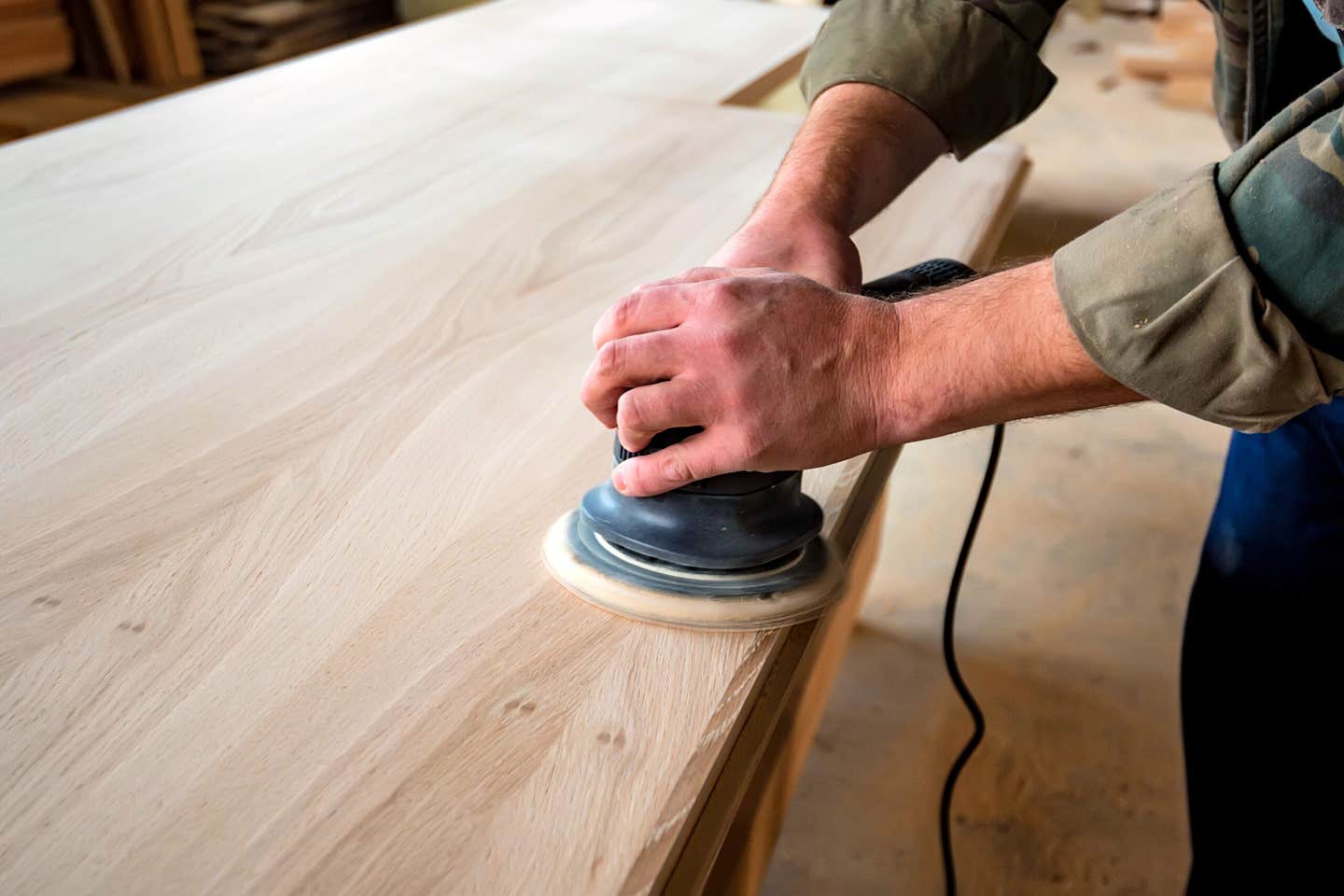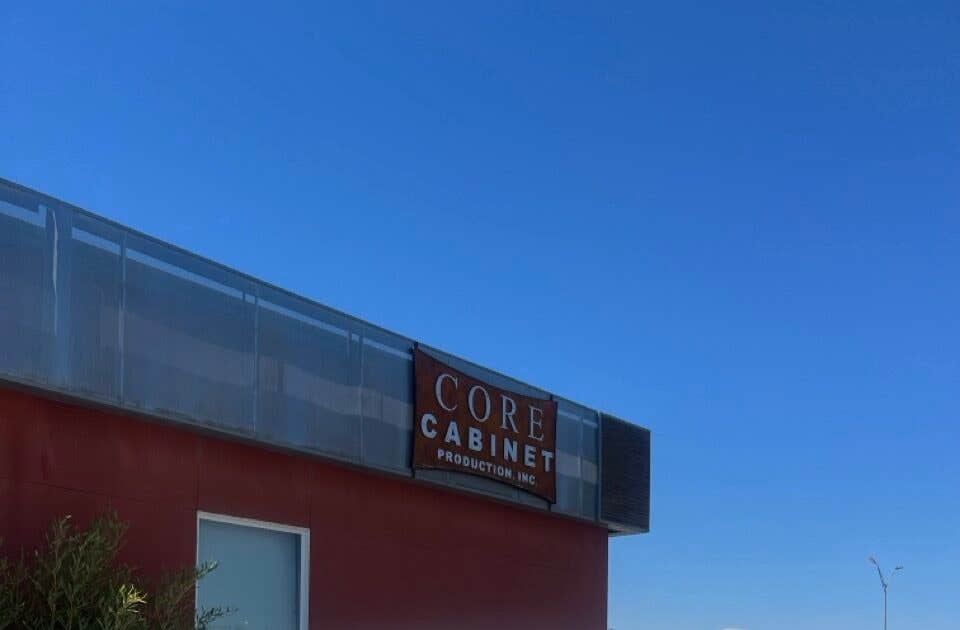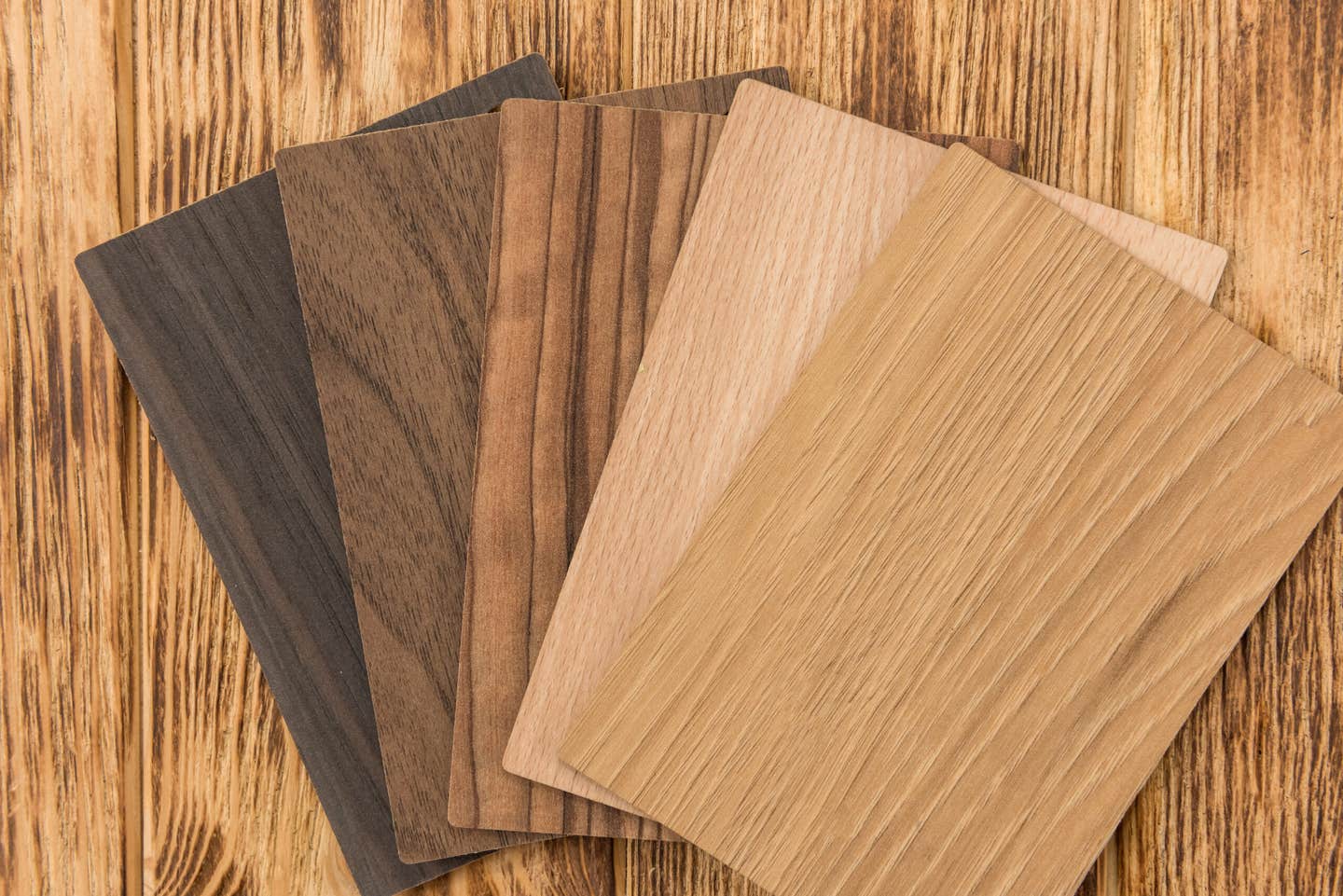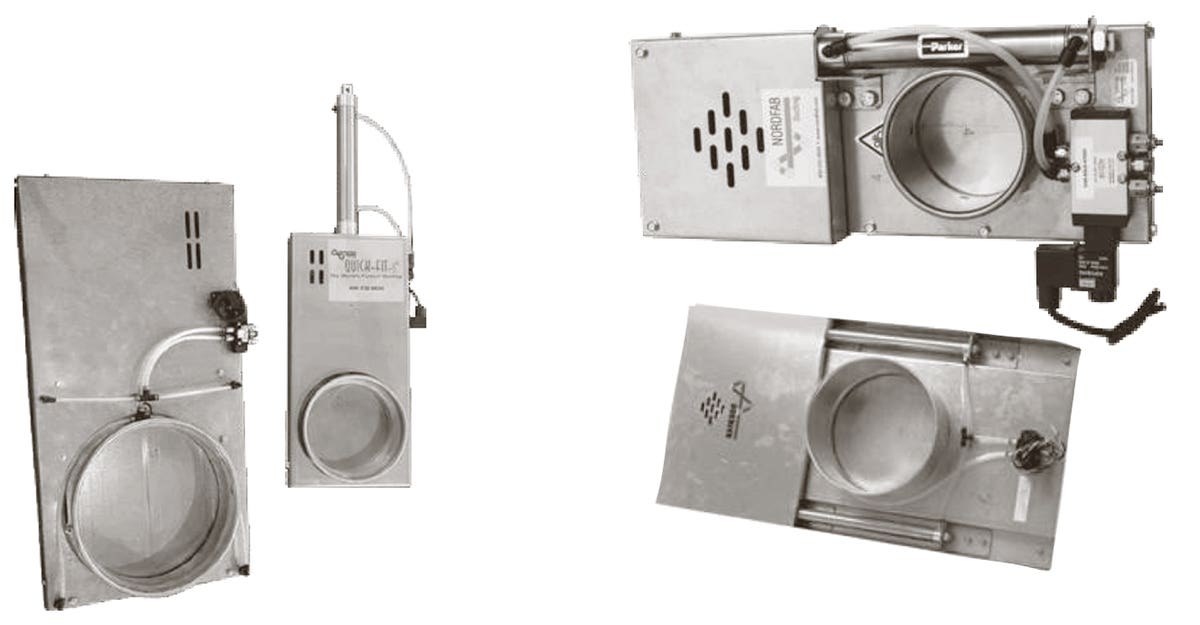Removing the pain
New sanding solutions include wide belt through benchtop machines, aggregate heads, next generation abrasives, and more.
You’re not just getting a fine piece of furniture, you’re receiving the personal attention of a passionate craftsman.”
That’s how the owner of Roltgen Wood Works in Rapid City, S.D. (roltgenswoodworks.com) describes the design/build experience for his custom clients. A maker of one-of-a-kind desks, dining rooms and art furniture, Jeff Roltgen is indeed passionate about sanding quality. So, he invested in a wide belt sander about five years ago. After doing his homework, he settled on an American-made 4375 from Safety Speed Mfg. (safetyspeed.com) in Minneapolis. It’s a 20-hp, 3-phase machine that’s designed for woodworkers on a budget who require solid performance but don’t want to pay for extras. One of the primary tasks where Roltgen uses the machine is sanding veneered tabletops. Using 220 grit paper, he says he sneaks up on the perfect surface in increments of .005”. The key, he notes, is to be sure to sand the substrates to equal thickness prior to veneering. That will avoid sand-through. The bottom line for him is that this machine has taken most of the manual labor out of sanding large surfaces, and it does so while delivering what he calls “the fussiest of finishes.”
For small shops with limited resources, there are several highly reputable manufacturers that build affordable, top-quality, entry-level wide belt sanders. A good place to start a search is the Woodshop News online resource guide (resourceguide.woodshopnews.com), where a search for “sanders, widebelt” will yield dozens of results. And speaking of wide belts, IceClean Systems in Wichita, Kan. (icecleansys.com) has developed a process that uses dry ice (frozen carbon dioxide) to clean belts while they’re still on the machine. A little nozzle is moved across the belt as it travels, blasting residue from the grit. It’s especially effective with softwoods and less dense hardwoods.
For woodshops that are working with smaller panels or profiled parts, removing the pain from sanding can be a little less expensive. For example, Laguna Tools, the parent company of SuperMax (supermaxtools.com) sanders has introduced a new 19-38 combination brush/drum sander that allows a woodworker to drum sand and profile sand on the same machine. One simply removes the drum and pops in a nylon or wire brush that has essentially the same dimensions. The open-ended sander handles stock up to 19” wide in a single pass, and 38” wide in two passes. It has a conveyor belt and really well-designed, simple adjustments. These include tension rollers that are adjustable in both height and hold down pressure, so they can eliminate snipe.
JET Tools North America (jettools.com) is based in La Vergne, Tenn. and has recently updated its popular small benchtop panel sander, the JWDS-1020. This very compact unit is perfect for box makers, luthiers and the like. It has a -hp motor and will sand boards up to 3” thick and 20” wide. There’s an innovative and efficient dust hood for a 4” connection, and adjusting the table to parallel just requires the turn of a dial. Veneer users will appreciate the self-cooling extruded aluminum sanding drum that protects parts from heat damage.
Clever options
Have you ever jury-rigged plumbing fittings to attach a sander to a shop vacuum? It works, but a couple of months ago Rockler Woodworking and Hardware in Minneapolis decided that woodworkers probably need to stay out of the plumbing aisle. In November, the company launched its new Dust Right small port kit (item No. 51170 at rockler.com). It’s a 12’-long length of hose that comes with four swiveling, flexible rubber ports that fit snugly on a variety of handheld tools such as disc and belt sanders. The hose attaches to a standard 2-1/4” shop vacuum, and the kit is probably going to save a lot of lungs – it pretty much eliminates airborne fines when used on a portable sander.
For shops that don’t own a stationary disc sander, Freud has come up with a 10” calibration and sanding disc. Sold through distributors such as Klingspor ($29.95 at woodworkingshop.com, item No. FR00010), it will accept adhesive backed sanding discs in 60, 80, 120 and 150 grits. The device essentially turns a table, radial arm or miter saw into a disc sander. Shops will need to be a little creative about dust collection, but it’s a great way to keep an otherwise idle spare saw busy.
Such simple engineering can take a lot of the danger or drudgery out of sanding. More complex engineering is moving along, too. These days it’s hard to attract quality employees, and harder still to keep them challenged and interested. So, it doesn’t make a lot of sense to ask them to endure the drudgery of sanding – especially when that can be done faster and more efficiently in a dust-tight enclosure by a CNC, or perhaps by a dedicated profile sander.
Shops that own even basic CNC routers might be able to add sanding aggregates to the machine’s capabilities. There are belt-sanding aggregates can sand doors and panels, and orbital aggregates that can work on profiles, curves, flats and edges. One nice aspect of adding an aggregate head is that the part can be cut, shaped and then sanded on the same machine.
Among the options for sanding on a CNC is the Turbosand system from Voorwood Precision Machinery (voorwood.com). The company offers more than 4,000 stock profiles that can be mounted in shapers/sanders, CNC routers and tenoning machines.
Flex Trim (flex-trimusa.com) in Queensbury, N.Y. and makes flexible sanding heads that can be used in a number of machines including CNCs. They can be custom manufactured in exactly the diameter and length a shop needs, with a variety of sanding media, brush heights and cut sizes available. The use of an O-ring in each head lets the woodworker replace brushes without dismantling the entire sanding head and shaft, saving valuable production time. And the tool’s low speed parameters are designed to deliver better sanding and longer abrasive life.
Southampton, N.J. is home to Sand-Flee (rjrstudios.com), which makes sanding mops that are designed to clean up curves, profiles and intricate or irregular shaped objects. They come in three sizes (2”, 4” and 6” diameters), and the mandrels are color coded for different grits. The mops are made of Egyptian cotton and premium aluminum oxide abrasive, and they can be used in a flexible shaft, a bench or die grinder, or in hand drill, drill presses and even lathes (for sanding the insides of bowls).
Abrasive personalities
A couple of years ago, Abrapower USA (abrapowerusa.com) opened a new facility in Florence, Ky. where it makes abrasive sponges. One of those, called Magic Sander, is a dual-sided, flexible 320-grit aluminum oxide pad that can be used wet or dry to sand between coatings on curved and profiled work. Another simple but effective product from this company is the Dual Angle sponge, which is an abrasive rectangle with a 70-degree angle on each end that allows woodworkers to perform one of the most irritating little tasks in furniture construction, getting into tight spots such as inside corners.
Mirka USA (mirka.com/en) in Twinsburg, Ohio is a division of a parent company based in Finland. Mirka’s new paper abrasive, Iridium, is the result of years of development work and the company says it “cuts faster with fewer steps from rough to smooth surface finish.” Thanks to a new precision coating, it repels dust so the grains stay sharp longer. Dust extraction is also enhanced by Mirka’s new multi-hole pattern. From coarse to fine grits, Iridium works well on both soft and hard surfaces, and professional users can receive a free sample to give it a try.
Surf-Prep (surfprepsanding.com) has facilities in both California and North Carolina. The company manufactures a line of palm sanders that use foam-backed abrasives that can follow a contour or curve. Among the company’s newer solutions is the 3” x 4” Electric Ray sander that has three speeds (4,000, 7,000 and 9,000 RPM). It has incredible torque that lets the tool, rather than the woodworker, do the sanding.
One of the newer sanding options from Uneeda Enterprises (sandpaper.com) of Spring Valley, N.Y. is AKF abrasive belts with Rombex technology. This product won a Visionary Award at AWFS 2017, and the belts have a unique rhomboidal coated pattern that was originally patented by the Italian manufacturer Levorato Abrasives. It allows increased dust extraction while dispersing heat from friction more evenly and efficiently. The company has also introduced EKAMESH open mesh abrasive discs, which offer a unique net pattern that is designed for a smoother, dust-free finish.
Whether it’s new abrasives for hand sanding, a special head for CNC sanding, or perhaps investing in a desktop wide belt or drum sander, it often pays to do a little research and see how other woodworkers are handling the least liked task in any shop.
This article originally appeared in the March 2020 issue.







